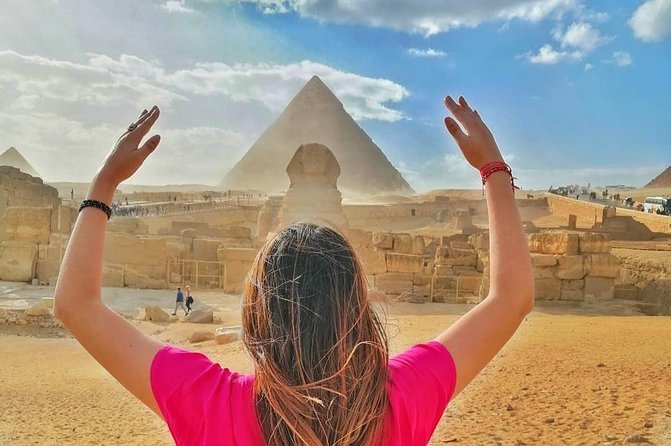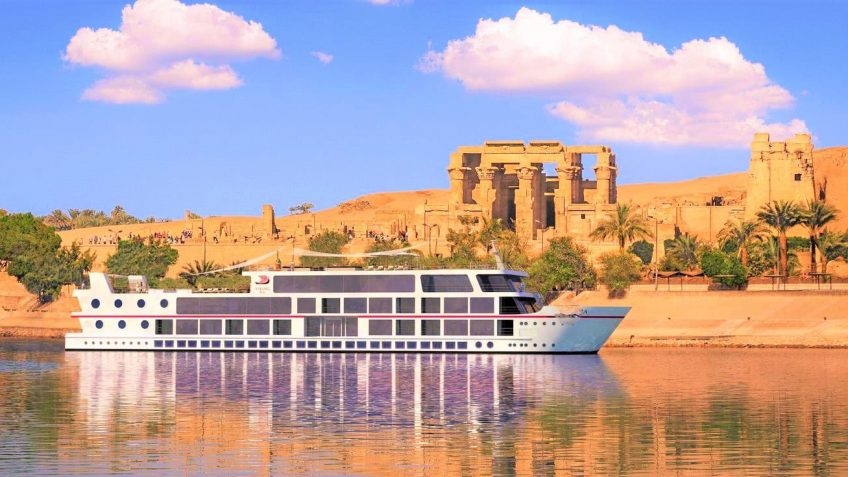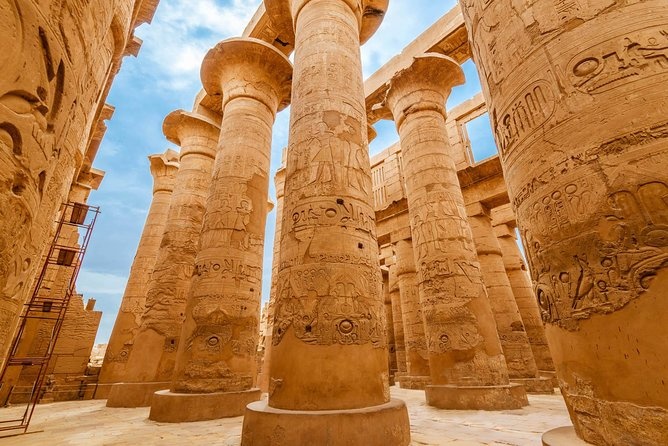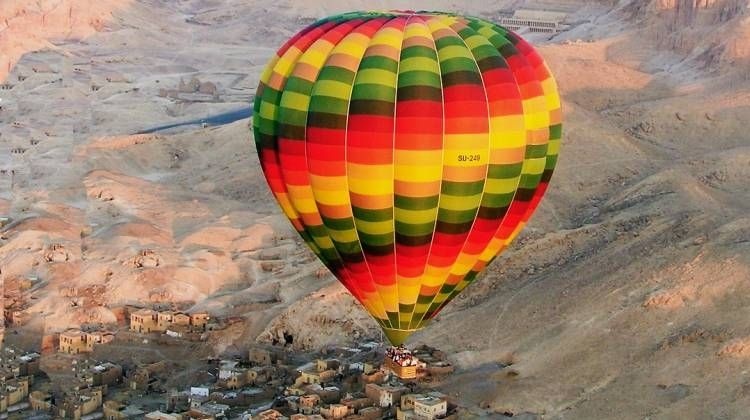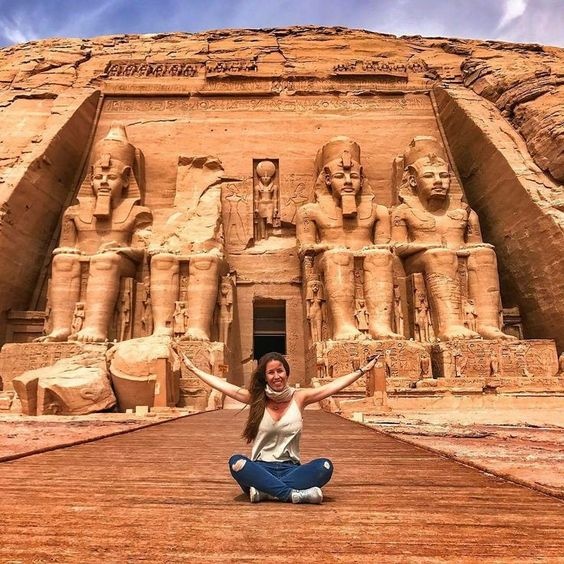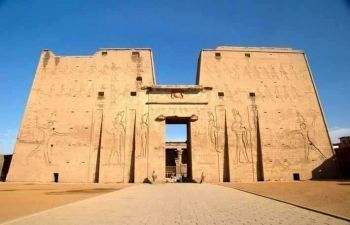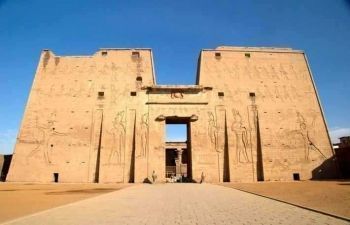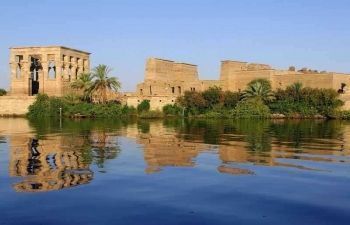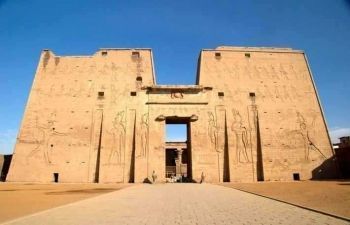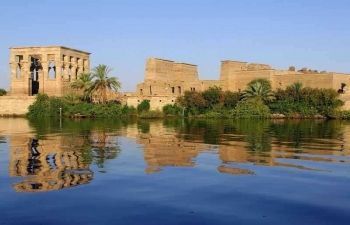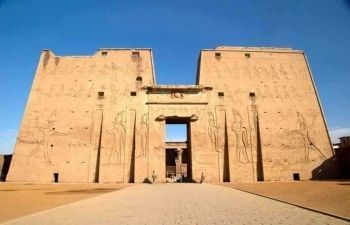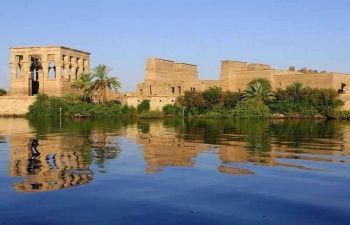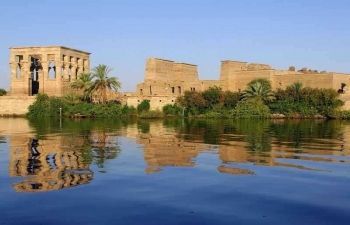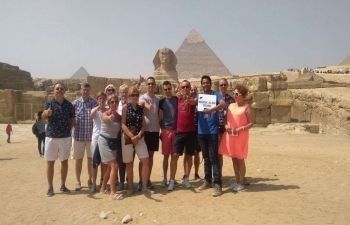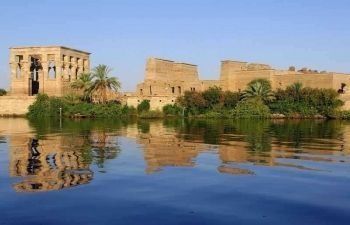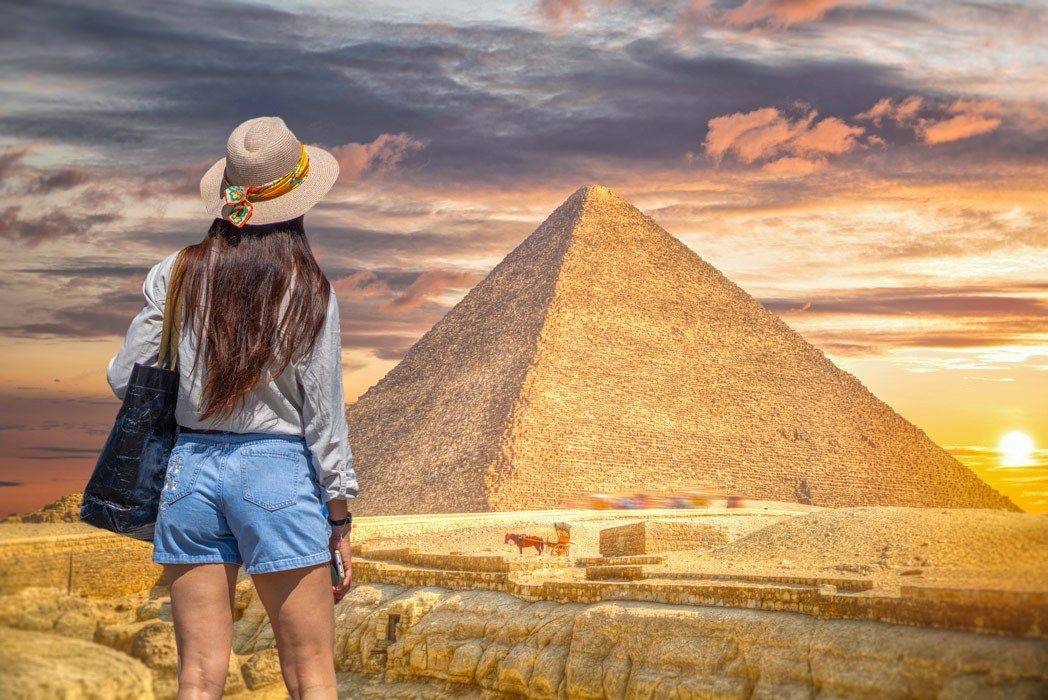The Best Egypt Itinerary 7 days to see all of the sites
Find The Ultimate 7 Day Egypt Itinerary: Cairo, Luxor, Aswan & Abu Simbel in a private trip. The following is the perfect 7-day Egypt itinerary. Seven days is just enough time to visit Aswan, Abu Simbel, Luxor, and Cairo.
Egypt Travel Guide
The Ultimate 7 Day Egypt Itinerary
The Best Egypt Itinerary 7 days to see all of the sites
The Best Egypt Itinerary 7 days to see all of the sites
7 Day Egypt Itinerary: Aswan, Abu Simbel, Luxor & Cairo
The following is the perfect 7-day Egypt itinerary. Seven days is just enough time to visit Aswan, Abu Simbel, Luxor & Cairo but if you have additional time, great! I recommend spending more time in Luxor or traveling to the Red Sea. Day 1-3: Aswan:
Aswan is a Nubian city located in southern Egypt next to the Nile. Most travelers begin their trip in Cairo but I suggest starting in Aswan and working your way north. You’ll be saving the best for last. Day 1: Arrive in Cairo and Travel to Aswan:
Afternoon Tea at the Old Cataract Hotel
The Sofitel Old Cataract Hotel is a beautiful colonial-style hotel that was built in 1899. Chances are you’ll be tired from your travels and afternoon tea is the perfect way to relax and spend the afternoon. The Cataract Hotel’s outdoor restaurant, The Terrace, has an incredible view of the Nile and is a fantastic place to watch the sunset. Tea service comes with a variety of small sandwiches, desserts, and fruit. Day 2: Explore Aswan & the Nile:
Philae Temple:
Philae Temple is a gorgeous but small temple on the island of Aglika. The temple is dedicated to Isis, Osiris, and Horus. You’ll see lots of hieroglyphs while in Egypt but the ones at Philae are well preserved and are some of the last to be written by ancient Egyptians. Felucca Ride
Spend the afternoon floating down the Nile on a Felucca or traditional sailboat. you can enjoy the sunset from the water. Other things to do in Aswan are The Unfinished Obelisk or the Nubian Village. The Unfinished Obelisk would have been the largest obelisk in the world if it had been completed at 138 ft (42 m).
How to Get to Egypt
Egypt is located in northeastern Africa. Direct flights to Cairo International Airport are available from a handful of cities, including Chicago, New York, and London. Whether your flight is direct or not, you will first arrive in Cairo and from there will fly Egyptair to any of Egypt’s major cities. A visa is required for US citizens to enter Egypt. A visa can be purchased on arrival or in advance online. I suggest purchasing in advance. The process is quick and simple and will save you time at the airport. A tourist visa is $25 USD and is good for 60 days.
Best Time to Visit Egypt
The best time to visit Egypt is November through February. During the winter, the weather is mild and the afternoons are often filled with sunshine. However, Cairo can still get quite cold, so make sure to bring a jacket. These months are also considered the high season. Tourism is at its peak and accommodations are priced at their highest. The months shouldering the winter can be a great time to travel as well. These months are March through May and September through October. These months are warmer, with May and September being hot but major sites are less crowded and there are deals to be found on hotels. The summer months of June through August should be avoided. These months are extremely hot and temperatures can reach 108°F (42°C). The summer is considered the low season and you’ll find the best prices on accommodations. Travel isn’t impossible during this time if you are ok with visiting attractions when they open at 6 am to avoid the heat. Ramadan is a month of fasting and prayer that’s observed by the Muslim community. The dates change from year to year but it is the ninth month of the Islamic calendar. Travel during this time should be avoided since many attractions have shorter hours and restaurants and cafes may be closed during the day. Egyptian mummy at Mummification Museum
Mummification Museum
How to Get Around Egypt
Getting around Egypt is fairly easy. However, it does require some advance planning when traveling between cities. It’s also important to take traffic into account, especially in Cairo. Nile Cruise:
A Nile cruise is a popular option for getting around Egypt. The boat sails down the Nile from Cairo and disembarks at the country’s most popular destinations along the water. There are short cruises to Luxor and longer ones that include a stop in Aswan. Most are all-inclusive. 7 Day Egypt Itinerary: Karnak
Karnak
7 Day Egypt Itinerary: Aswan, Abu Simbel, Luxor & Cairo
The following is what I consider the perfect 7-day Egypt itinerary. If you are a bit of a slower traveler, you may want to add an additional day or two. Seven days is just enough time to visit Aswan, Abu Simbel, Luxor & Cairo but if you have additional time, great! I recommend spending more time in Luxor or traveling to the Red Sea. Day 1-3: Aswan
Aswan is a Nubian city located in southern Egypt next to the Nile. Most travelers begin their trip in Cairo but I suggest starting in Aswan and working your way north. You’ll be saving the best for last. I think if I had started anywhere else I wouldn’t have been as impressed with the smaller temples that I saw at the beginning of my trip. How to Get to Aswan
Aswan is Egypt’s southernmost city and is located 543 mi (337 km) from Cairo. The best way to get to Aswan is by plane. The flight time from Cairo is about 1 hr 30 min. There are a handful of Egyptair flights each day and you should be able to find one that continues to Aswan shortly after you land at Cairo International Airport.
Day 1: Arrive in Aswan
Afternoon Tea at the Old Cataract Hotel
The Sofitel Old Cataract Hotel is a beautiful colonial-style hotel that was built in 1899. Chances are you’ll be tired from your travels and afternoon tea is the perfect way to relax and spend the afternoon. The Cataract Hotel’s outdoor restaurant, The Terrace, has an incredible view of the Nile and is a fantastic place to watch the sunset. Tea service comes with a variety of small sandwiches, desserts, and fruit.
Afternoon Tea at the Cataract Hotel
Day 2: Explore Aswan & the Nile
Philae Temple
Philae Temple is a gorgeous but small temple on the island of Aglika. A ticket is purchased on the mainland and then a water taxi is needed to reach the island. The ride is a quick 10 minutes or so. It’s easy to visit independently or you can book a tour. The temple is dedicated to Isis, Osiris, and Horus. You’ll see lots of hieroglyphs while in Egypt but the ones at Philae are well preserved and are some of the last to be written by ancient Egyptians. Felucca Ride
Spend the afternoon floating down the Nile on a Felucca or traditional sailboat. I suggest going late afternoon so that you can enjoy the sunset from the water. Most are priced per hour and the amount is negotiable. Other things to do in Aswan are The Unfinished Obelisk or the Nubian Village. The Unfinished Obelisk would have been the largest obelisk in the world if it had been completed at 138 ft (42 m). 7 Day Egypt Itinerary: Philae Temple
Philae Temple
Day 3: Day Trip to Abu Simbel
How to Get to Abu Simbel
Abu Simbel is usually done as a day trip from Aswan. It is possible to fly to Abu Simbel from Cairo but I found that there are few flights and they are on the expensive side. A private car is your best. You’ll need to arrange a car at least one day prior to departure. This is because the driver is required to get a permit for transport. Your hotel in Aswan should be able to assist you. A good price for the round-trip drive is $130 USD. This is for transport only and does not include a guide. Abu Simbel is located near the Sudan border. The travel time is about 3-4 hours each way. Most of the tour buses leave as soon as the roads open at 5 am. To avoid the crowds, I recommend leaving at 7 am so that you arrive around 10:30 am just as all the large groups are leaving. You’ll want to give yourself about 2 hours to explore. A more budget-friendly way to visit Abu Simbel is to join a group tour. You definitely won’t have the place to yourself but if that isn’t important to you, a group tour can save you a lot of money, especially if traveling solo. Abu Simbel Temple
Abu Simbel is made up of two large temples cut into massive rocks and commissioned during the reign of Ramses II. The Grand Temple is dedicated to Ramses himself and has a facade of four colossal statues, each representing Ramses II sitting on a throne. The smaller temple was built to honor Ramses’ favorite wife, Nefertari. The temples were relocated from Aswan to southern Egypt in 1968 after the Aswan High Dam was built and waters threatened to submerge it. Abu Simbel is a favorite on this Egypt itinerary. It’s one of Egypt’s most impressive sites and is absolutely worth the drive. Day 4-5: Luxor
Luxor , once the city of Thebes, was the capital of ancient Egypt. It is the world’s largest open-air museum and is home to Egypt’s most famous sights. The Nile divides Luxor into two parts: the East Bank and West Bank. The East Bank is where you will find most of Luxor ’s hotels, shops, and restaurants. You’ll also find the Luxor and Karnak
Karnak
The Karnak
Luxor Temple is located in the center of town. Parts were built under different Kings and the temple isn’t dedicated to any one god or king. It was dedicated to the rejuvenation of kingship and may have been the site where many of the pharaohs were crowned. Make sure to check out the temple’s tall obelisk (there used to be two, the other was moved to Paris), the court of Ramses II, and the Avenue of the Sphinxes. The Avenue of the Sphinxes is a straight line of sphinx statues that once connected Luxor Temple to Karnak
Valley of the Kings
Valley of the Kings is Egypt’s most famous collection of tombs. The mountainside doesn’t look like much at first glance, but below it are 63 tombs of some of the most important Egyptian pharaohs (including the famed King Tutankhamun ). The massive site was discovered in 1922 and is still being excavated today. A ticket includes admission to three tombs of your choice. There is an additional fee for King Tutankhamun , Seti I, and Ramses V & VI. My guide made some suggestions as to which tombs to visit and I chose Ramses I, Ramses III, and Merenptah. They turned out to be great choices. Ramses I is on the smaller side but it’s very colorful and well preserved. I also purchased a ticket to King Tutankhamun ’s tomb. I highly recommend it. I had always been fascinated with Tut and Egyptian history as I child so it was incredible to see his mummy in person. If you’re looking for his famous gold and blue mask, it is currently on display at the Egyptian Museum in Cairo (as of March 2022). It will soon be moved to the new Grand Egyptian Museum in Giza. Deir el-Bahari
Deir el-Bahari is a complex of mortuary temples and tombs. It was built on several levels that include three terraces that rise up the cliffside. The most famous of the three celebrate Hatshepsut , the queen who became pharaoh and ruled for 21 years during the early part of the New Kingdom. The temple has an impressive facade and colorful hieroglyphs upon its walls. I’d suggest visiting Deir el-Bahari late morning after the Valley of the Kings. Medinet Habu
Medinet Habu is primarily known as the mortuary temple of King Ramses III, although there are other buildings that make up the complex. It’s one of Egypt’s most well-preserved temples from the New Kingdom. The temple has beautiful columns and reminded me somewhat of Karnak
The Colossi of Memnon are two massive sandstone structures of Pharaoh Amenhotep III and are the first thing you will see when arriving on the West Bank. There was once a third which is currently being restored as the site is excavated. The site is a quick stop that is doable as you are entering or exiting the West Bank. Most tour groups make a stop in the morning so afternoons tend to be quieter. Day 6-7: Cairo
Cairo is the capital of Egypt and the largest Arab city. It’s home to over 21 million people, making it a very busy city. It takes some planning to get around and to make the most of your time. Day 6 is another day where I think it is very worthwhile to hire a guide. How to Get to Cairo
Cairo is located in northern Egypt and is 436 mi (701 km) from Luxor . The best way to get to Cairo from Luxor is to fly. Flight duration is just 1 hr 10 min. I recommend taking a late evening flight on your last day in Luxor . Things to Do in Cairo:
Day 6: Great Pyramids, Egyptian Museum , & Bazaar
Pyramids of Giza Plateau
Egypt’s most famous pyramids are located in Giza, about 30 minutes from Cairo. The Giza Pyramids were built over 4,500 years ago and the site is the last standing of the Seven Wonders of the Ancient World. Three pyramids dominate the plateau with the Great Pyramid being the largest. It stands at 481 ft (147 m) and it’s estimated that 2.3 million stones were used in its construction. At the Giza Plateau, you’ll also find the Great Sphinx. The Great Sphinx is the oldest sphinx in Egypt and one of the largest. It was carved directly into bedrock during the reign of Khafre. Ancient Egyptian sphinxes have a human head and the body of a lion. The lion may have represented strength and the head, the intelligence of the king. It’s best to start your day at Giza and visit at 8 am upon opening. Egyptian Museum
The Museum of Egyptian Antiquities, or the Egyptian Museum , is the oldest archaeological museum in the Middle East. It opened in 1902 and houses a massive collection of antiquities and has over 120,000 items. The museum is currently located near Tahrir Square in Cairo but is in the process of being moved to Giza. The Grand Egyptian Museum is scheduled to open in November of 2022. Due to the move, you’ll see a lot of empty space around the Cairo location. there was still a lot to see and King Tutankhamun ’s famous gold and blue mask had yet to be moved. Khal El-Khalili Bazaar
Khal El-Khalili Bazaar is a famous open-air bazaar and souk located in historic Cairo. The busy bazaar has all kinds of things ranging from souvenirs to more exotic items such as beautiful brass lanterns, glass lamps, spices, jewelry, and more. It’s also home to many cafes, including El-Fishawi, the oldest in Egypt. It’s open 7 days a week, with the exception of Sundays. Day 7: Cairo:
